Note from dshort: This commentary has been updated to include the February data for Industrial Production.
Official recession calls are the responsibility of the NBER Business Cycle Dating Committee, which is understandably vague about the specific indicators on which they base their decisions. This committee statement is about as close as they get to identifying their method.
There is, however, a general belief that there are four big indicators that the committee weighs heavily in their cycle identification process. They are:
- Industrial Production
- Real Personal Income (excluding Transfer Receipts)
- Nonfarm Employment
- Real Retail Sales
The Latest Indicator Data
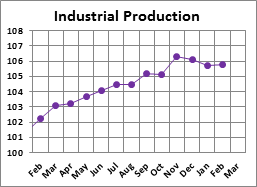
Industrial Production: According to the Federal Reserve, "Industrial production increased 0.1 percent in February after decreasing 0.3 percent in January. In February, manufacturing output moved down 0.2 percent, its third consecutive monthly decline. The rates of change for the total index in January and for manufacturing in both December and January are lower than previously reported. The index for mining fell 2.5 percent in February; drops in the indexes for coal mining and for oil and gas well drilling and servicing primarily accounted for the decrease. The output of utilities jumped 7.3 percent, as especially cold temperatures drove up demand for heating. At 105.8 percent of its 2007 average, total industrial production in February was 3.5 percent above its level of a year earlier." The full report is available here.
Today's month-over-month increase of 0.09 percent (to two decimal places) follows a downwardly revised -0.38 percent in January. Today's headline number came in below the consensus expectations, which ranged from 0.2 to 0.3 percent increase.
As I've mentioned before, my personal view is that Industrial Production is the least useful of the Big Four economic indicators. It's a hodge-podge of underlying index components and subject to major revisions, which undercuts its value as a near-term indicator of economic health. Presumably the winter data this year, like last year, is skewed by unseasonably severe winter. Thus, manufacturing output, we learned today, declined for the third consecutive month. But the headline number was buoyed by a surge in utilities resulting from heating demand.
As a long-term indicator, it needs two key adjustments to have any correlation with economic reality. First, it should be adjusted for inflation using some sort of deflator relevant to production. Second, it should be population-adjusted.
Real Per-Capita Industrial Production
The chart below is my preferred way to look at Industrial Production over the long haul. I've used the Producer Price Index for All Commodities as the deflator and Census Bureau's mid-month population estimates to adjust for population growth. I've indexed the adjusted series so that 2007=100. The February index, calculated in this fashion, is 89.9 percent, about ten percent below the 2007 benchmark. Note also that 8-month disinflationary trend in the Producer Price Index has been a substantial boost to this inflation-adjusted alternate view.
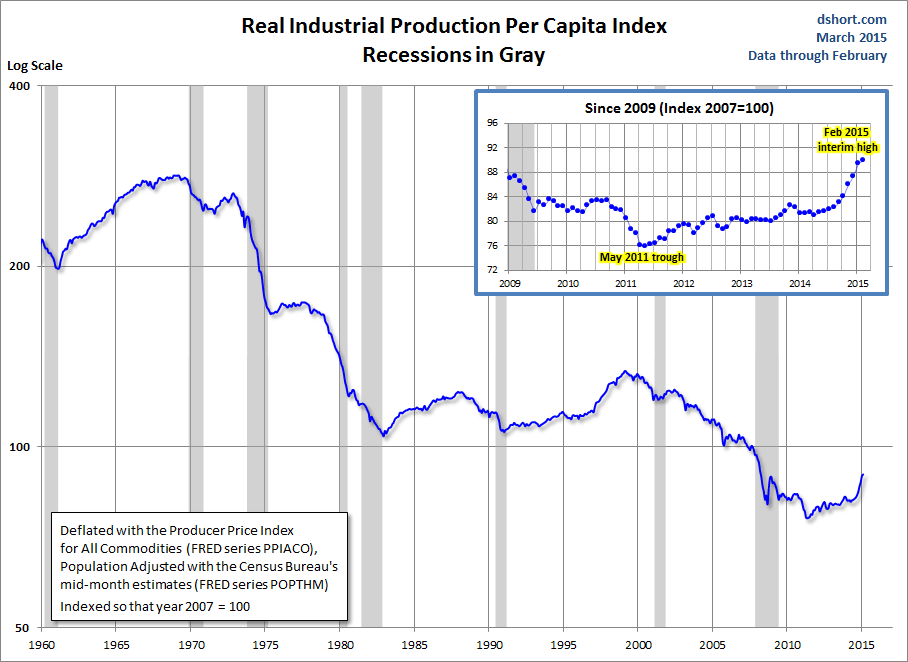
The most recent data point in this adjusted series is a new interim high following the Great Recession. Note, however, that the acceleration in the adjusted indicator over the past several months is largely attributable to a disinflationary plunge in the Producer Price Index.
I'm indebted to Bob Bronson of Bronson Capital Research for instructing me on the necessity of inflation and population adjustments to decipher of the Federal Reserve's otherwise misleading Industrial Production data.
The Generic Big Four
The chart and table below illustrate the performance of the generic Big Four with an overlay of a simple average of the four since the end of the Great Recession. The data points show the cumulative percent change from a zero starting point for June 2009. We now have three indicator updates for the 66th month following the recession. The Big Four Average is (gray line below).
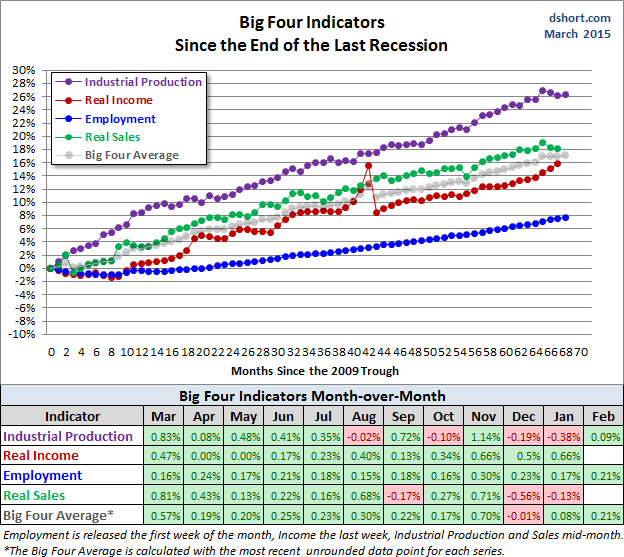
Current Assessment and Outlook
The overall picture of the US economy had been one of slow recovery from the Great Recession with a clearly documented contraction during the winter of2013-2014, as reflected in last year's GDP for Q1 of last year. In April we'll get our first peak at Q1 2015 GDP. Preliminary data suggests that we'll see renewed finger pointing at the weather. The Big Four average in recent months suggests that the economy remains near stall speed.

The next update of the Big Four be the January Real Retail Sales, once we have the January Consumer Price Index, which will be posted on February 26th.
Background Analysis: The Big Four Indicators and Recessions
The charts above don't show us the individual behavior of the Big Four leading up to the 2007 recession. To achieve that goal, I've plotted the same data using a "percent off high" technique. In other words, I show successive new highs as zero and the cumulative percent declines of months that aren't new highs. The advantage of this approach is that it helps us visualize declines more clearly and to compare the depth of declines for each indicator and across time (e.g., the short 2001 recession versus the Great Recession). Here is my own four-pack showing the indicators with this technique.

Now let's examine the behavior of these indicators across time. The first chart below graphs the period from 2000 to the present, thereby showing us the behavior of the four indicators before and after the two most recent recessions. Rather than having four separate charts, I've created an overlay to help us evaluate the relative behavior of the indicators at the cycle peaks and troughs. (See my note below on recession boundaries).
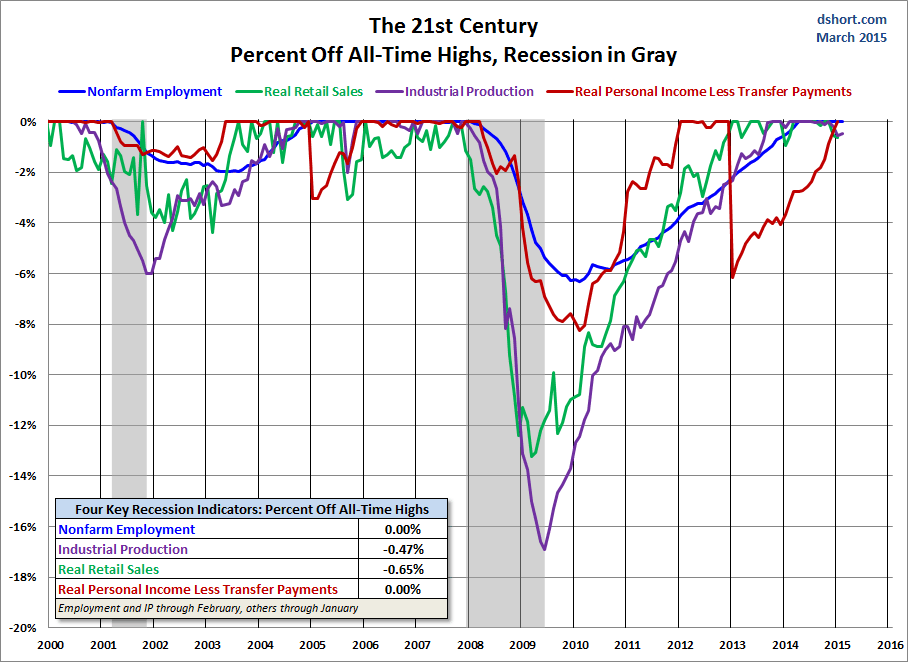
The chart above is an excellent starting point for evaluating the relevance of the four indicators in the context of two very different recessions. In both cases, the bounce in Industrial Production matches the NBER trough while Employment and Personal Incomes lagged in their respective reversals.
As for the start of these two 21st century recessions, the indicator declines are less uniform in their behavior. We can see, however, that Employment and Personal Income were laggards in the declines.
Now let's look at the 1972-1985 period, which included three recessions -- the savage 16-month Oil Embargo recession of 1973-1975 and the double dip of 1980 and 1981-1982 (6-months and 16-months, respectively).
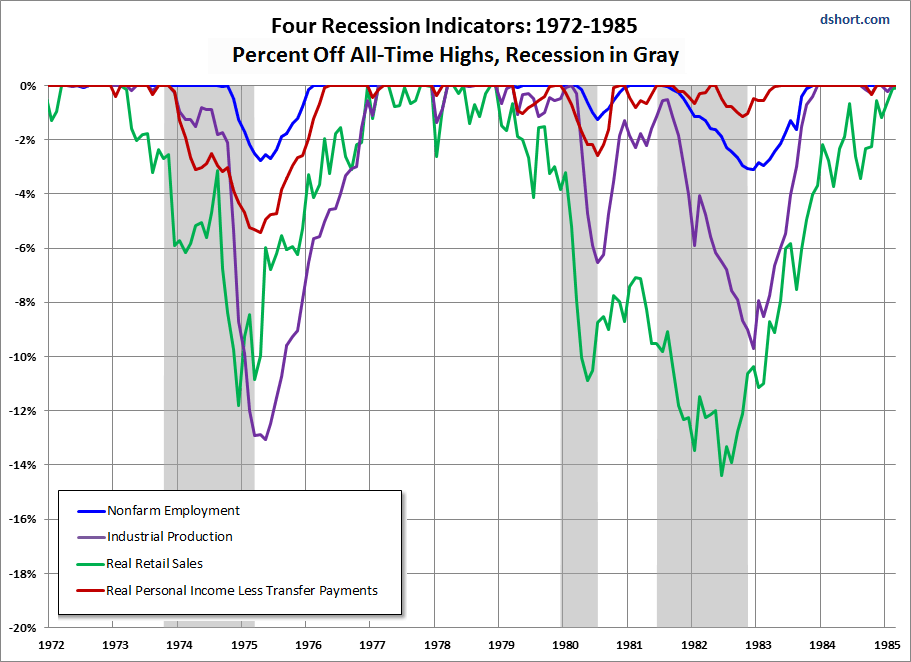
And finally, for sharp-eyed readers who can don't mind squinting at a lot of data, here's a cluttered chart from 1959 to the present. That is the earliest date for which all four indicators are available. The main lesson of this chart is the diverse patterns and volatility across time for these indicators. For example, retail sales and industrial production are far more volatile than employment and income.

History tells us the brief periods of contraction are not uncommon, as we can see in this big picture since 1959, the same chart as the one above, but showing the average of the four rather than the individual indicators.
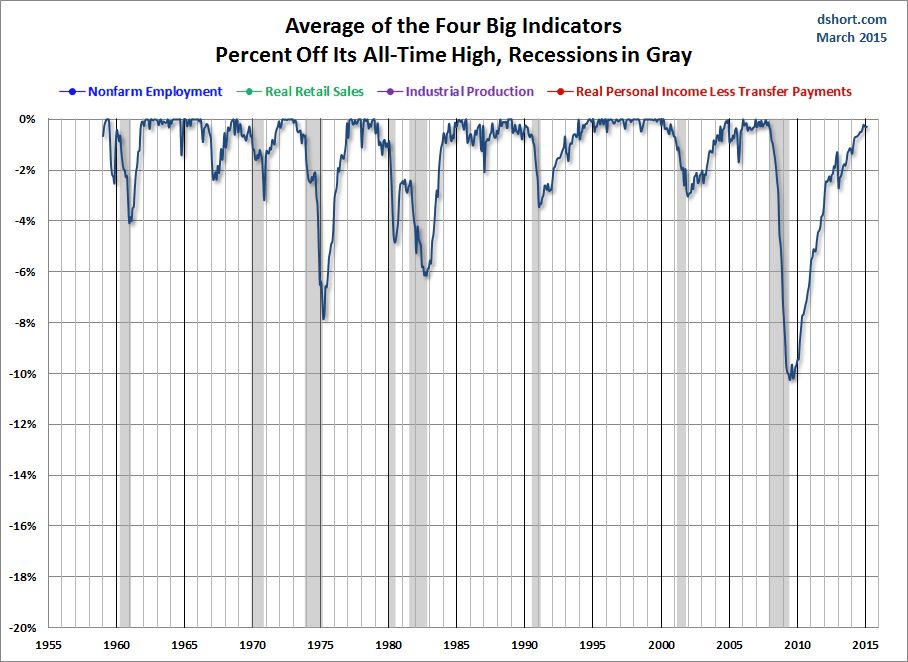
The chart clearly illustrates the savagery of the last recession. It was much deeper than the closest contender in this timeframe, the 1973-1975 Oil Embargo recession. While we've yet to set new highs, the trend has collectively been upward, although we have that strange anomaly caused by the late 2012 tax-planning strategy that impacted the Personal Income.
Here is a close-up of the average since 2000.
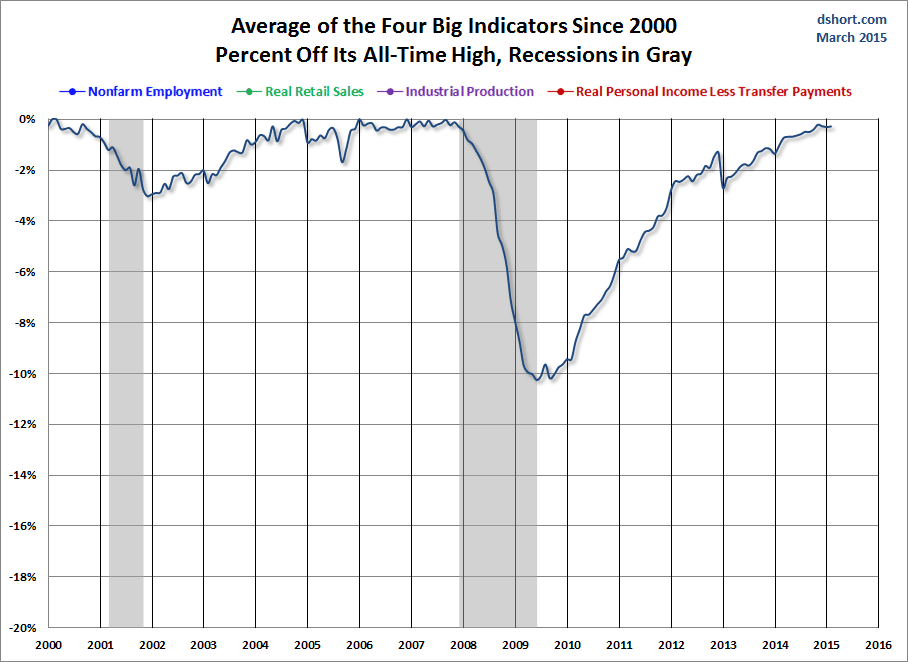
Appendix: Chart Gallery with Notes
Each of the four major indicators discussed in this article are illustrated below in three different data manipulations:
- A log scale plotting of the data series to ensure that distances on the vertical axis reflect true relative growth. This adjustment is particularly important for data series that have changed significantly over time.
- A year-over-year representation to help, among other things, identify broader trends over the years.
- A percent-off-high manipulation, which is particularly useful for identifying trend behavior and secular volatility.
Industrial Production
The US Industrial Production Index (INDPRO) is the oldest of the four indicators, stretching back to 1919, although I've dropped the earlier decades and started in 1950.
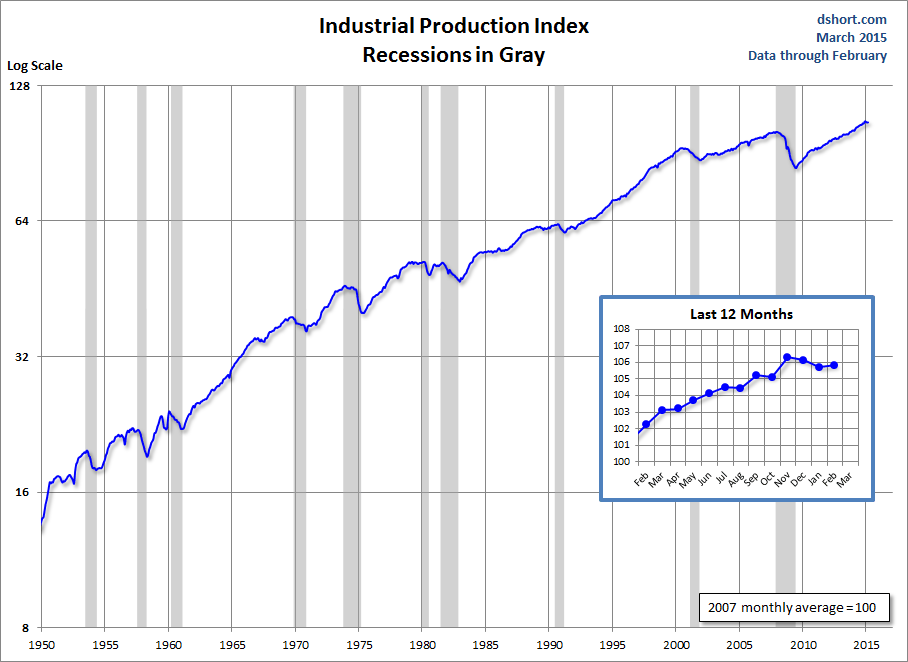
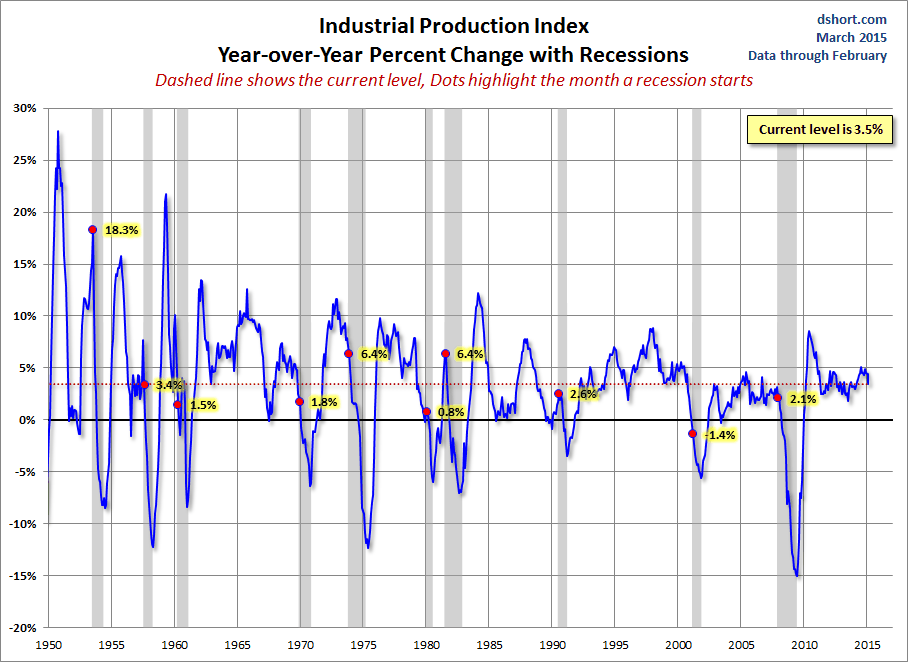
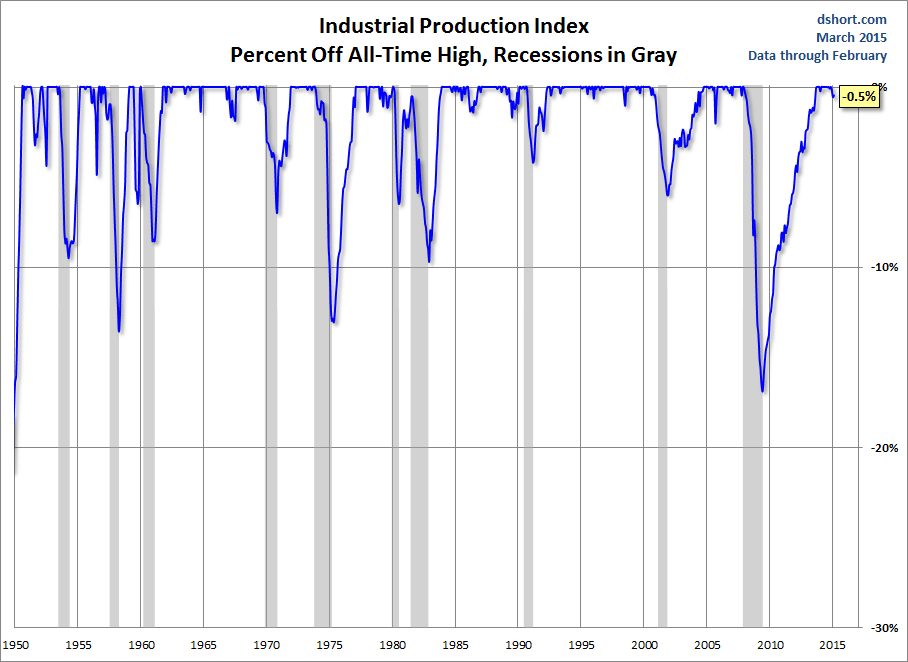
Real Personal Income Less Transfer Payments
This data series is computed as by taking Personal Income (PI) less Personal Current Transfer Receipts (PCTR) and deflated using the Personal Consumption Expenditure Price Index (PCEPI). I've chained the data to the latest price index value.
The "Tax Planning Strategies" annotation refers to shifting income into the current year to avoid a real or expected tax increase.


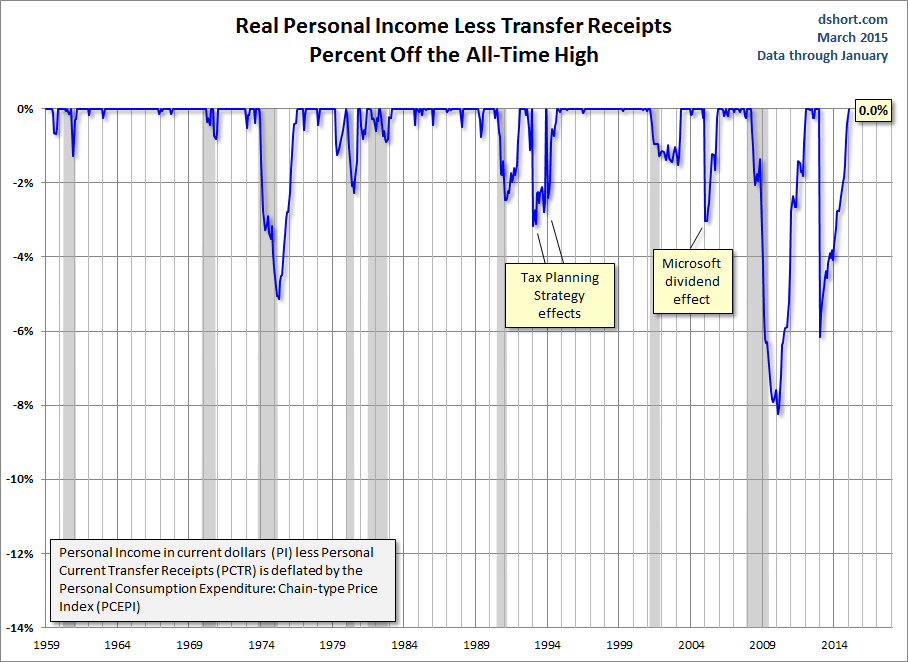
Transfer Payments largely consist of retirement and disability insurance benefits, medical benefits, income maintenance benefits (more here).
The chart below shows the Transfer Payment portion of Personal Income. I've included recessions to help illustrate the impact of the business cycle on this metric.
Total Nonfarm Employees
There are many ways to plot employment. The one referenced by the Federal Reserve researchers as one of the NBER indicators is Total Nonfarm Employees (PAYEMS).
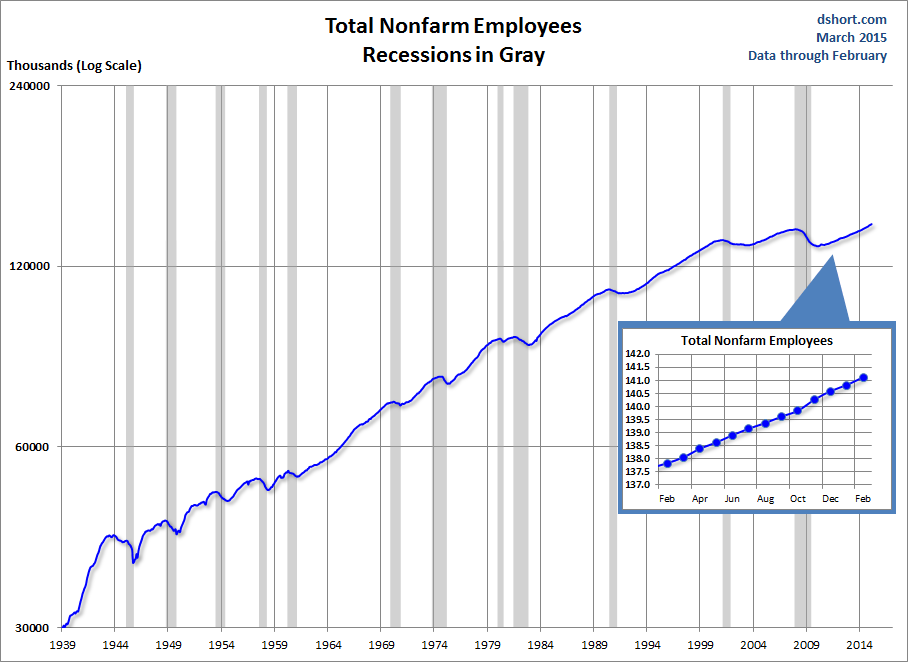
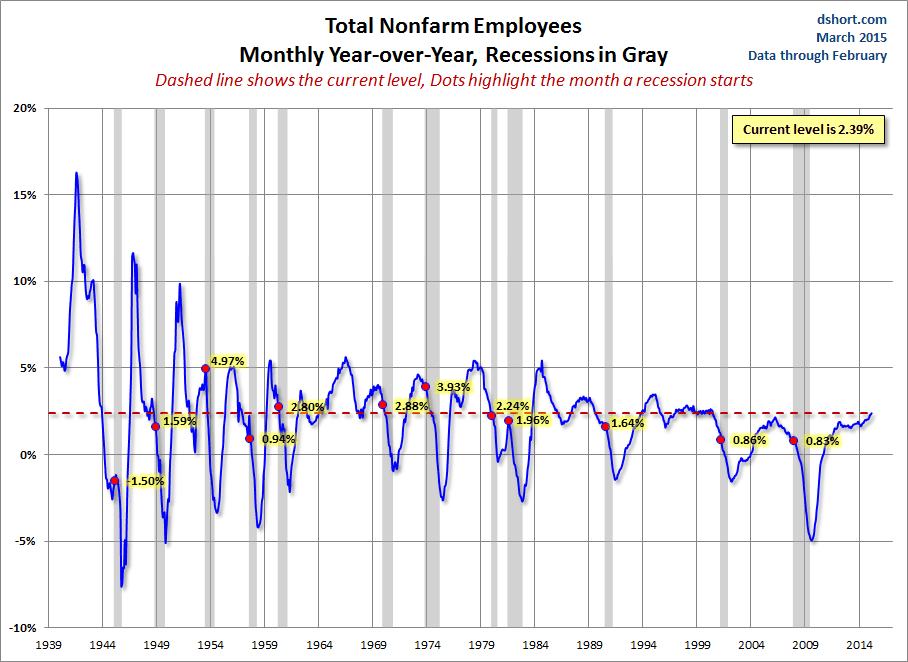
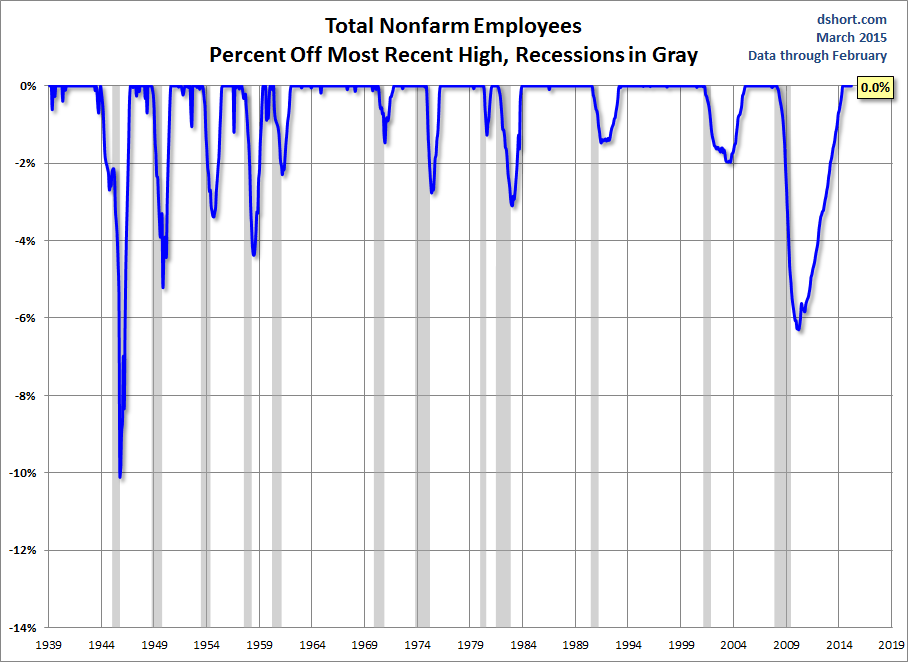
Real Retail Sales
This indicator is a splicing of the discontinued retail sales series (RETAIL, discontinued in April 2001) with the Retail and Food Services Sales (RSAFS) and deflated by the seasonally adjusted Consumer Price Index (CPIAUCSL). I used a splice point of January 1995 because that date was mentioned in the FRED notes. My experiments with other splice techniques (e.g., 1992, 2001 or using an average of the overlapping years) didn't make a meaningful difference in the behavior of the indicator in proximity to recessions. I've chained the data to the latest CPI value.

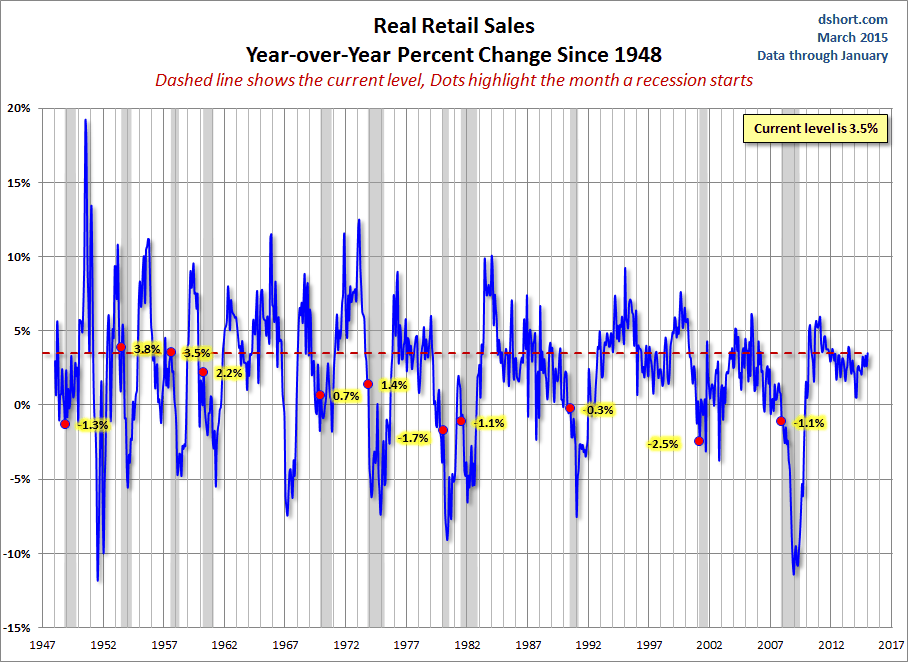
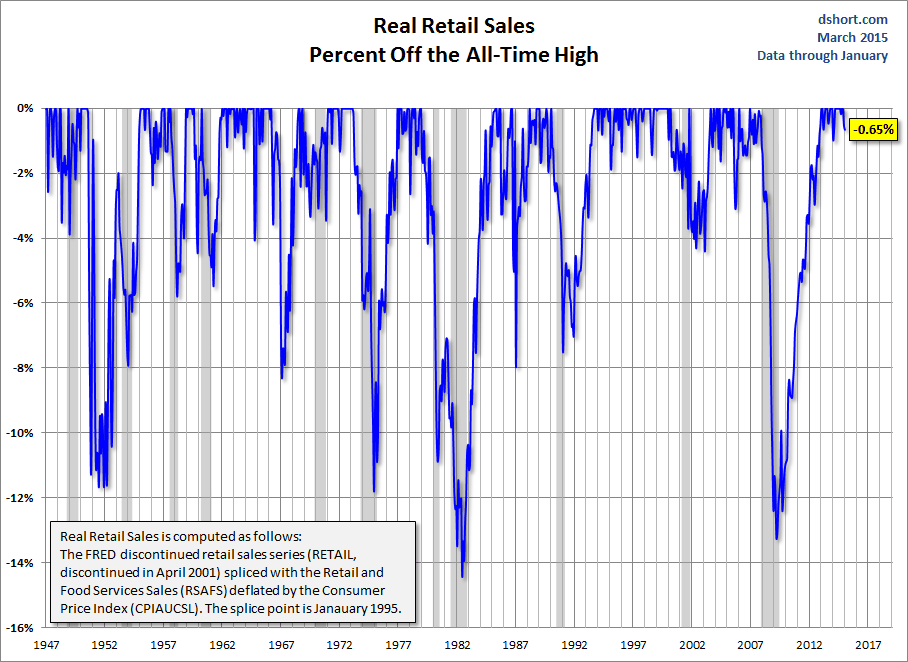
Note: I represent recessions as the peak month through the month preceding the trough to highlight the recessions in the charts above. For example, the NBER dates the last cycle peak as December 2007, the trough as June 2009 and the duration as 18 months. The "Peak through the Period preceding the Trough" series is the one FRED uses in its monthly charts, as explained in the FRED FAQs illustrated in this Industrial Production chart.
